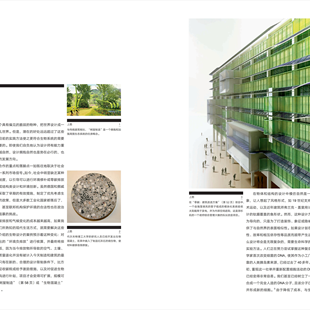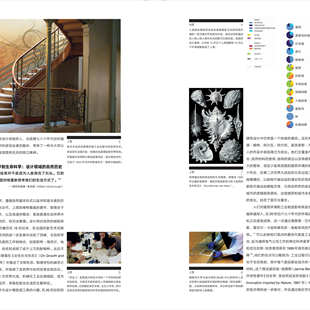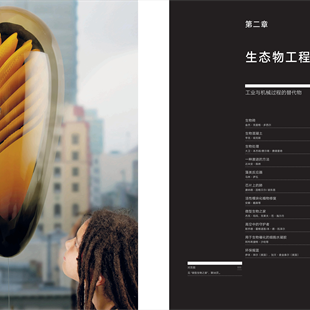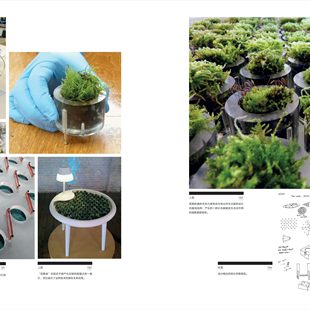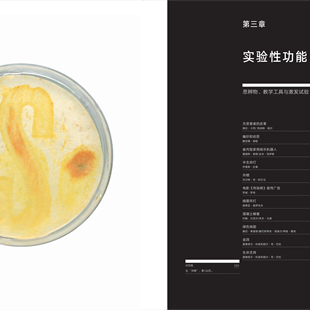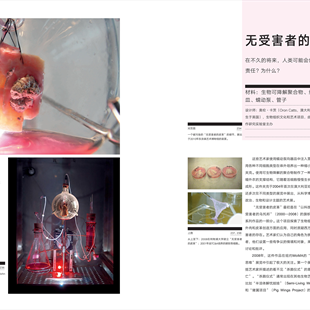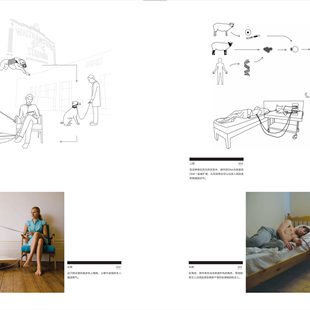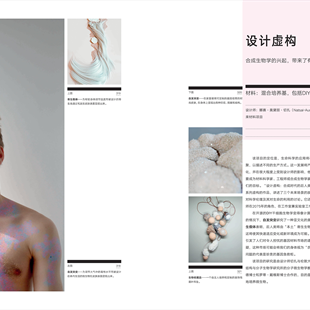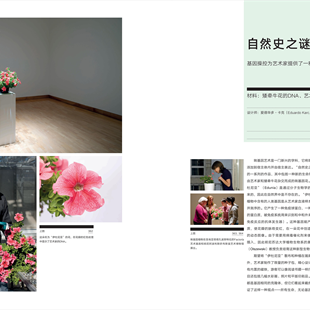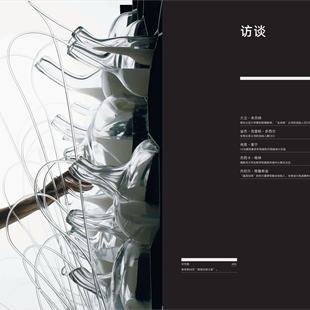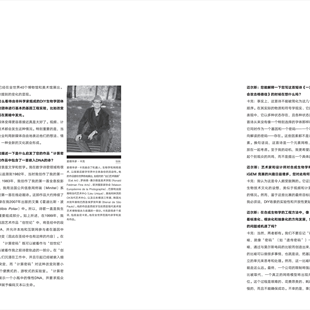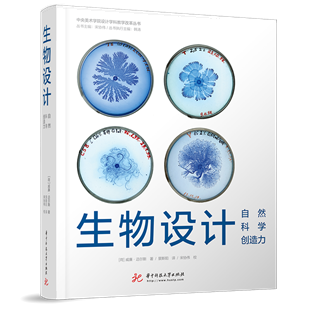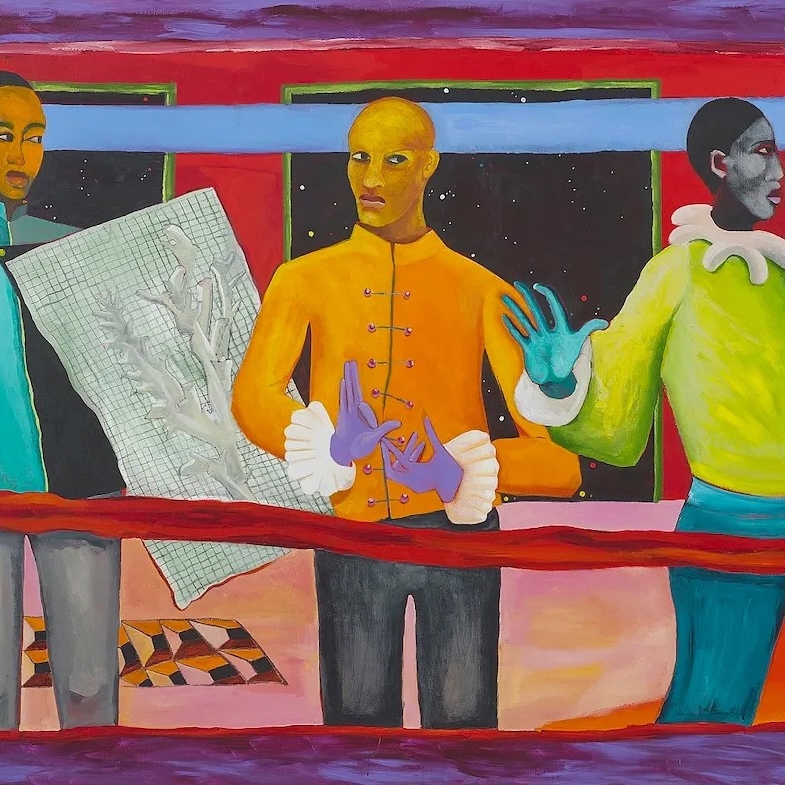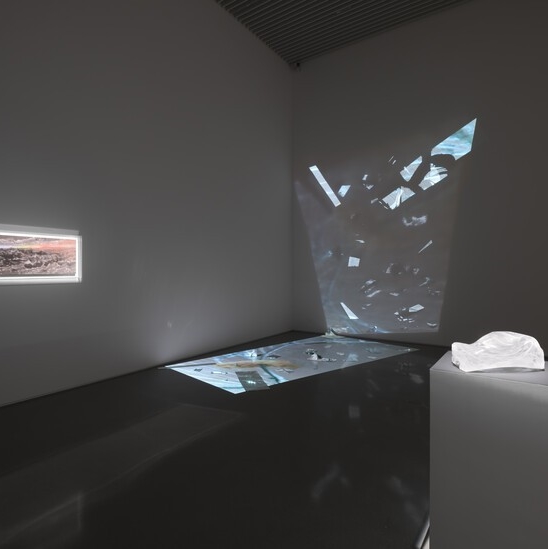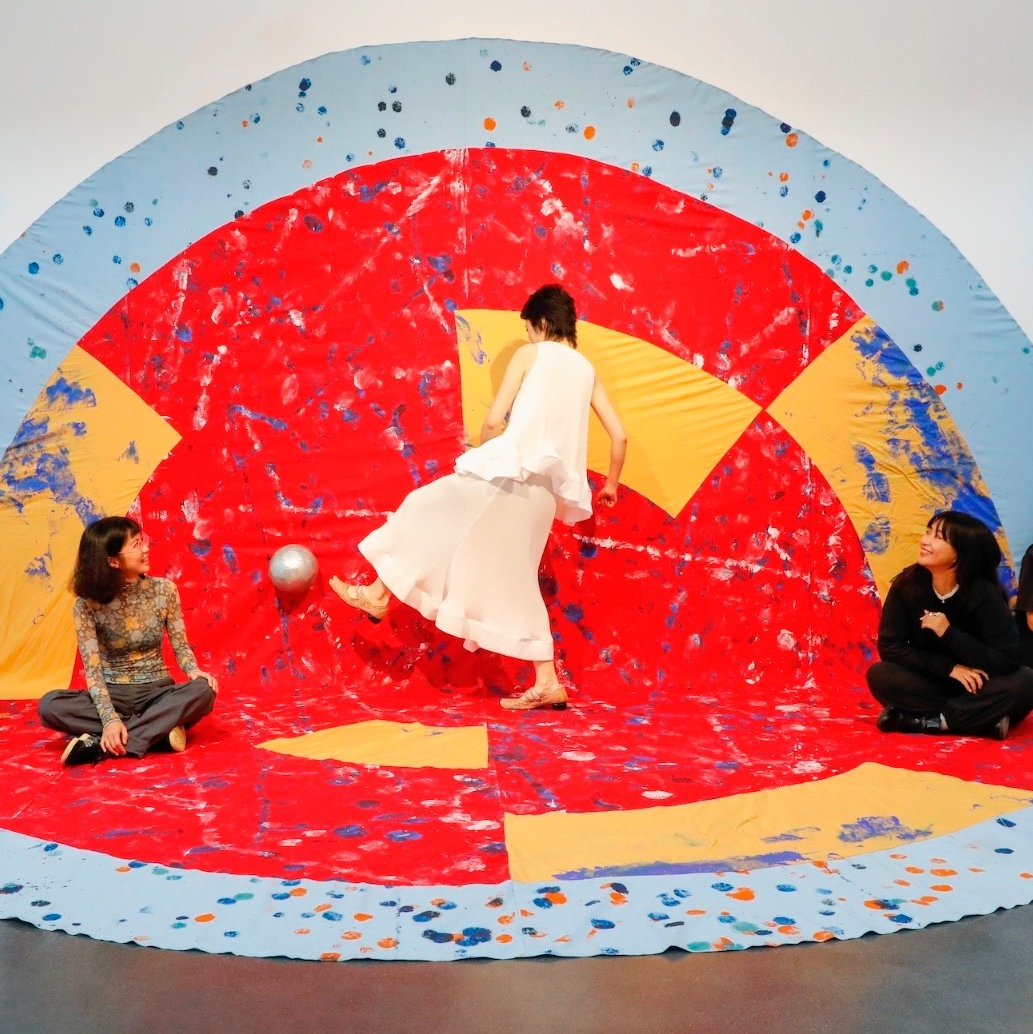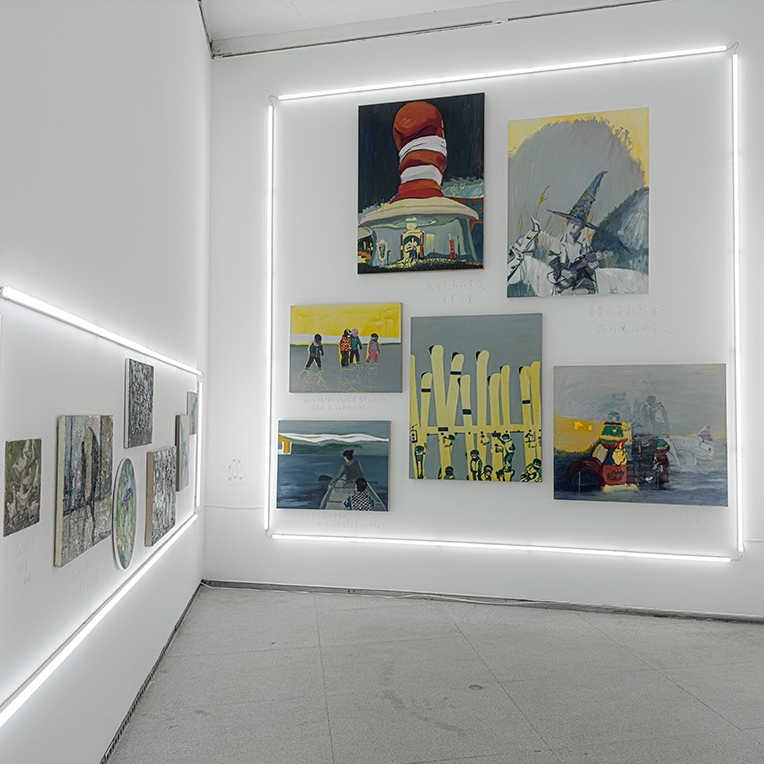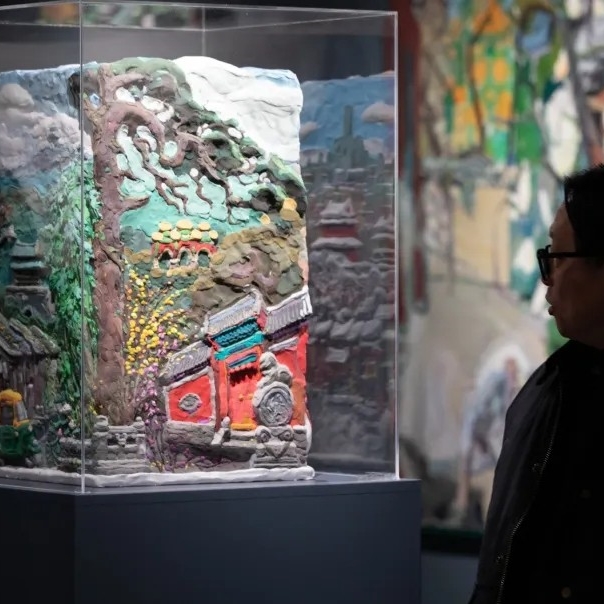
Designers face an unprecedented urgency to alter their methods and reprioritize their goals to address the accelerating degradation of the environment.
—William Myers
Biodesign is the next step beyond biology-inspired approaches to design and fabrication. Unlike biomimicry or the popular but vague "green design," biodesign refers to the incorporation of living organisms as essential components in design, enhancing the function of the finished work. Biodesign leaps ahead of imitation and mimicry to integration and use, dissolving boundaries and synthesizing new hybrid objects and architecture. The book also highlights experiments replacing industrial or mechanical systems with a biological process, an approach becoming more important under the pressure of the climate crisis. The final section of the book ventures beyond functional or speculative design into the realm of fine art, presenting works that incorporate living matter or respond in a creative way to how our shared concepts of life, identity, and nature are shifting.

William Myers is a curator, author, and teacher based in Amsterdam. He graduated from the School of Visual Arts in New York with a degree in Design Criticism. He has organized a number of international exhibitions highlighting the impact of scientific advances and emerging technologies on culture. William's writing and exhibitions have been profiled in the journal Science, The New York Times, The Wall Street Journal, Smithsonian Magazine, Volkskrant, Domus, and Folha de São Paulo, among others. Previously he worked for the Museum of Modern Art (MoMA), the Guggenheim Museum, the Smithsonian Cooper-Hewitt National Design Museum, Hunter College, Vitra Design Museum, TU Delft, MIT Museum, Design Academy Eindhoven, Sciences Galleries in Dublin and Rotterdam, and Het Nieuwe Instituut in Rotterdam.
Central Academy of Fine Arts Design Education Reform Series
Chief Editor: Xiewei Song
Executive Editor: Tao Han
Book Title: Bio Design: Nature + Science + Creativity
Author: [Holland] William Myers
Translated by Siyang Jing; Proofread by Xiewei Song
Publisher: Huazhong University of Science and Technology Press
Publication date: May 2022 First edition First printing
Book number: ISBN 978-7-5680-7759-0
Book size: 16”
Number of pages: 300
Recommendations
By Xiewei Song
Dean, School of Design, Central Academy of Fine Arts
Chief Editor of Central Academy of Fine Arts Design Education Reform Series
This is an era full of crises and opportunities. On the one hand, the exponential development of science and technology has led to a rapid iteration of lifestyle and productive media. On the other hand, the increasingly aggravated climate change has caused damages with butterfly effect upon a series of fields. In this context, in Bio Design: Nature + Science + Creativity, the design issues that the designers should focus on today, several technological mediums that are possible to utilize,as well as the inescapable ecological responsibility are proposed. The book explains how design can be integrated with biology and how the designers should cooperate with life scientists through numerous emerging cases. Besides, the topics involved in the book not only include biological design, ecological design, material design and genetic engineering, but also contains the exclusive interviews of some bioart pioneers, such as Eduardo Kac and Oron Catts, as well as the detailed information about the international collaboration platforms and institutions. This book shows cutting-edge, multidisciplinary and international features, which can be regarded as a textbook and reference material for a lot of art and design learners.
Since the transformation of education in 2014, the School of Design at the Central Academy of Fine Arts has created a number of new research fields, such as the "Art and Technology", the "Ecology and Crisis Design", the " Biological Art" etc. In the Future Unknown Triennial, CAFAM Techne, the Beijing Media Art Biennale and the Eco-Vision Plan exhibition, numerous artists and projects from this book have been invited to communicate with the Chinese audiences. This book, as a popular publication, has been published and printed for many times abroad. Now, it is introduced to China as a series of books on educational reform in the School of Design of the Central Academy of Fine Arts. We expect that the readers will provide their valuable comments.
FOREWORD 1 (EXCERPTS)
VITAL DESIGN
Paola Antonelli
Since the first publication of this book, new technologies (CRISPR/ Cas9, to name just one) have provided powerful tools bridging the natural and the manufactured world, and ideas that were once confined to speculation are increasingly becoming reality. This shift has been on full display at the annual Biofabricate event in New York, which in its fourth edition in 2017 celebrated two important launches—Modern Meadow’s animal-free, liquid leather, Zoa, and Bolt Threads’ silken fibres ‘spun’ from yeast—along with many promising new prototypes and concepts.
William Myers has collected an impressive variety and number of case studies that involve organisms at all scales, from plants and animals to bacteria and cells, to be used as architectural, graphic, or interior elements. Architects working on wet buildings that adapt to changing environmental conditions and levels of occupancy, almost as if they were living organisms; designers concocting new diagnostic and therapeutic tools that rely on animals and plants; engineers devising new, self-healing construction materials; creatures themselves becoming the infrastructure of entire architectural systems. Despite the multitude of conversations and investigations happening in this space, biodesign remains a burgeoning industry that would benefit from increased public support and financial resources if it is to become truly viable at a global scale. If our relationship with nature is broken, this book makes us hope that perhaps we will be able to fix it from within.
FOREWORD 2 (EXCERPTS)
THE HYBRID FRONTIER
William Myers
This book presents an emerging and often radical approach to design that draws on research from the life sciences and even incorporates the use of living materials into structures, objects, and processes for the first time. Each chapter introduces a different theme, from designing for ecological enhancement to the use of speculative design and art as teaching tools. Taken together, the projects profiled here reflect an overdue shift in societal priorities toward sustainable approaches to building and manufacturing. This unifying purpose is driving increased collaboration between designers and biologists—an essential ingredient in many of the projects—and offers thrilling new forms and functions.
This new edition brings together the most inspiring recent examples of biodesign from around the world. Since the first edition was published, the practice of designing with biology has proliferated rapidly and become the focus of several competitions, school programs, museum exhibitions, conferences, and books. In addition, biodesign is the approach underlying the launch of numerous products and organizations, entering markets with solutions such as lab-grown leather, algae-based tableware, or self-healing concrete filler.
Biodesign goes further than the many biology-inspired approaches to design and fabrication. Unlike biomimicry, cradle-to-cradle, and the popular but frustratingly vague ‘green design,’ biodesign refers specifically to the incorporation of living organisms or ecosystems as essential components, enhancing the function of the finished work. It goes beyond mimicry to integration, dissolving boundaries between the natural and built environments and synthesizing new hybrid typologies.
FOREWORD 3 (EXCERPTS)
Interview: William Myers
Interviewer: Autumn (Siyang) Jing, Convener of Crisis and ecological Design, School of Design, Central Academy of Fine Arts
August 2021
1.Background
Jing: You have been focusing on bio-design, bio-art, and life sciences since more than a decade, which is a very cutting-edge intersection. What were the people and events that helped and inspired you at the beginning of your research?
William Myers: The people that come to mind are Alice Twemlow and Paola Antonelli: they both encouraged me with their educational and curatorial work to expand my definitions of design and art. In particular, Paola organized exhibitions such as Design and the Elastic Mind and Talk to Me at MoMA which were important influences, while Alice started a new Design Criticism program at the School of Visual Arts in New York which I attended. The events that inspired me included the launch of Genspace in New York, the first community biotech lab in the United States, which I supported and taught classes for. Also, having the first curatorial experience at the Cooper Hewitt Design Museum was formative, it taught me how to organize and exhibition and write a book.
Also, I should mention some books that were inspirations, they included Cradle to Cradle, Biomimicry, and The Sun, The Genome, and the Internet.
6. Design for Crisis
Jing: What can biodesign do for the world in the wake of global climate change, energy crisis, and especially the new pandemic? What are the advantages of bio/ecological design over other types of design?
William Myers: I think biodesign is more important than ever because it integrates with the biosphere in a responsible way and can help to preserve or enhance it. Climate change makes it ever more urgent to de-carbonise industry and commerce, to unlink economic growth from ecological destruction. The pandemic reminds us that it is important to have strong health, and part of that is to have exposure to many organisms, from plants to microbes in the soil, to have robust immune systems. There is a lot of fascinating research going on about how we can design interiors and even outdoor spaces to support those kinds of organisms that are good for our health, like pro-biotic design. See, for example, the center for Biology and the Built Environment or the work of the Living, both in the USA.
7. Research and Employment
Jing: What is the future of biodesign/ecological design? Do you have any advice and experience for young designers and artists today in choosing their future research direction? What are the future fields of employment in this emerging field?
William Myers: The employment opportunities are many and keep growing. The idea that we can and must replace fossil fuel-based systems and products with bio-based systems and products is finally accepted by many people. Now, there is growing investment and interest in making these changes, and supporting young companies that are doing it. One should also be aware, when making choices about where to work or what companies to invest in much of the world, the bio-applications of agriculture (food) and pharmaceuticals (medicine) are highly regulated and can be hard to enter, but in the areas of industrial design, architecture, and material technology, it is easier to get right to work and make products.
10. Suggestions
Jing: Looking back on your life, can you offer a word of advice to young people at each stage of their lives (when they are still in school, just graduated or at the early stages of their careers)?
William Myers: Find mentors who can give you advice a few times a year. These should be people doing work that you one day would like to do, like a senior designer, curator, teacher, whatever it is. Be sure that he mentor is willing to dedicate a little bit of time; if not, then find new mentors, it’s OK there are plenty of them out there. A good mentor will invest in your professional and personal development and also be able to tell you when they think you made a mistake. My other advice is to show your enthusiasm and never be afraid to ask questions or look stupid doing something you do not really know how to do.
CATALOGUE:
VITAL DESIGN
THE HYBRID FRONTIER
BRYOND MIMICRY
Chapter 1:
The Architectural Hybrid
Living Structures
and New Ecological Integrations
Chapter 2:
Ecological Object Engineering
Replacing Industrial
and Mechanical Processes
Chapter 3:
Experimental Functions
Speculative Objects,
Teaching Tools,
and Provocations
Chapter 4:
Dynamic Beauty
Artwork Crawling off the
Auction Block
Chapter 5:
Profiling Programs and Collaborations
Consilience in the 21st Century
Chapter 6:
Tips for Collaborations
INTERVIEWS
BIOGRAPHIES
CREDITS
CITATIONS
ACKNOWLEDGMENTS
Courtesy of CAFA School of Design.


